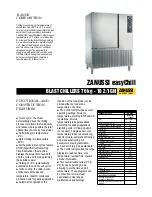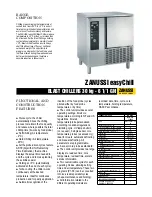
9
•
Pull rope with a rapid, continuous, full arm stroke.
Keep a firm grip on starter handle. Let rope rewind
slowly. Do not let starter handle snap back against
starter.
•
Repeat preceding instructions 5 and 6 until engine
starts. When engine starts, move choke lever on
engine halfway between CHOKE and RUN.
•
Move throttle control to IDLE position for a few
minutes warm-up. Move choke lever to RUN
position as engine warms up.
Models 343 & 345
•
Attach spark plug wire to spark plug. Make certain
the metal loop on the end of the spark plug wire
(inside the boot) is fastened securely over the metal
tip on the spark plug.
•
Make certain all controls are in the neutral position
(released). See Figure 6.
•
Place the engine speed control in the START
position.
•
Push primer two (2) or three (3) times See Figure
10. Wait about two (2) seconds between each
push.
NOTE:
Primer may be needed to restart a warm engine
after a short shutdown.
•
Stand at side of tiller. Grasp the starter handle and
pull out slowly, until it pulls slightly harder. Let rope
rewind slowly.
•
Pull rope with a rapid full arm stroke. Do not allow
handle to snap back. Allow it to rewind slowly while
keeping a firm hold on the starter handle.
NOTE:
If engine fails to start after three (3) pulls, push
primer two (2) times and pull starter rope again.
•
Repeat steps 4 and 5 until engine starts. Refer to
engine manual for additional engine information.
NOTE:
After starting engine and prior to using the tiller,
be certain to check the clutch adjustment as described
in “Checking the Clutch Adjustment” section of the
Assembly Instructions.
To Stop Engine
•
Move throttle control lever to STOP or OFF
position.
•
Disconnect spark plug wire from spark plug and
ground against the engine to prevent accidental
starting while equipment is unattended.
Using Your Tiller
Your tiller is a precision built machine designed for seed
bed preparation, cultivating, furrowing and mulching. It
is engineered to minimize the hardest work in the
vegetable or flower garden, to till the soil for planting
and cultivating, and to perform many other useful labor
saving tasks in the garden.
With the proper amount of care and maintenance, this
machine will provide the owner with many years of
service.
Wheel Position
The tiller is shipped with the wheels adjusted such that
the unit sits level. While tilling, as the tines enter the
ground and the front of the tiller lowers, the wheels
must be raised to level the unit, which is essential for
proper engine operation. This adjustment is made by
removing the clevis pin and hairpin clip from wheel
yoke, raising the wheels to the desired height, and
replacing the clevis pin and hairpin clip. See Figure 9.
Figure 9
Removing End Caps (Model 390 only)
The end cap, which are used to avoid tilled soil from
overflowing onto unwanted areas, are removable from
the outer axle. Remove the hairpin clip and clevis pin
that is securing each end cap and slide end cap off the
axle. See Figure 10.
Figure 10
Wheel
Yoke
Depth Stake
Hairpin
Clip and
Clevis Pin
Clevis Pin
End Cap
Hairpin Clip










































